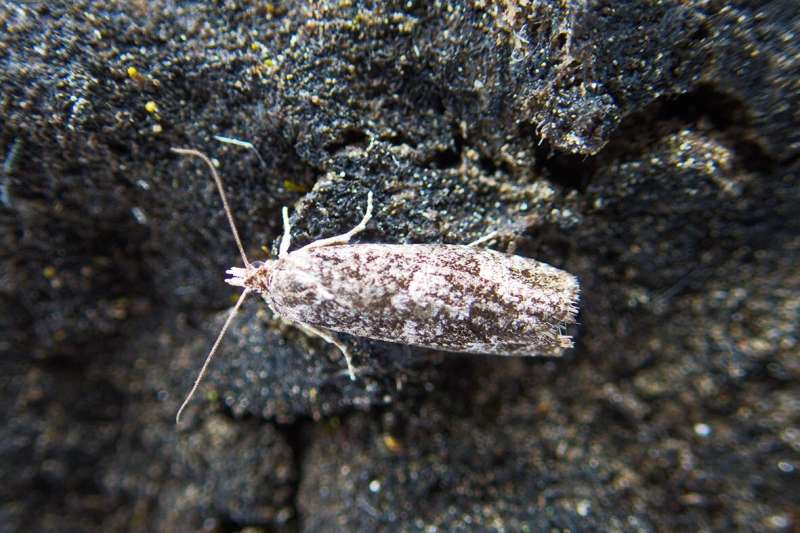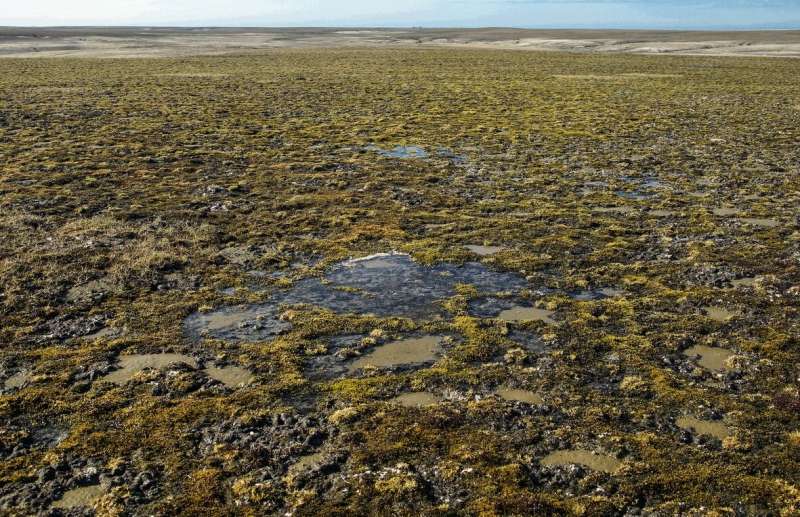Carried with the wind: Mass migration of Larch Budmoth to the Russian High Arctic

Arctic habitats have fascinated biologists for centuries. Their species-poor insect faunas, however, provide little reward for entomologists—scientists who study insects—to justify spending several weeks or even months in the hostile environments of tundra or polar deserts. As a result, data on insects from the High Arctic islands are often based on occasional collecting and remain scarce.
Vize Island, located in the northern part of the Kara Sea, is one of the least studied islands of the Russian High Arctic in terms of its biota. Scientists Dr. Maria V. Gavrilo of the Arctic and Antarctic Research Institute in Russia and Dr. Igor I. Chupin of the Institute of Systematics and Ecology of Animals in Russia visited this ice-free lowland island in the summer of 2020.
"Our expedition studied the ecology of Ivory Gull", Maria Gavrilo says, "but we also looked for other wildlife." Because of the lack of data, scientists appreciate any observation on insects they can get from the High Arctic.
On the island, the team found hundreds of small moths. They were identified by Dr. Mikhail V. Kozlov of the University of Turku, Finland, as Larch Budmoths—the first and only terrestrial invertebrate to ever be observed and collected on Vize Island. Their observations are published in the open-access, peer-reviewed journal Nota Lepidopterologica.
The scientists first observed live and freshly dead moths on the sandy banks of a pond near the meteorological station. Then, they saw hundreds of them at the sandy bottom of a river valley with shallow streams. Moths, single or in groups, were mostly found at the water's edge, along with some fine floating debris. Despite extremely low daily temperatures (+2-5°C), flying moths were also spotted on several occasions.
The larvae of Larch Budmoth feed on the needles of different coniferous trees. Because Vize Island is located 1000 km north of the tree limit, the scientists can be sure about the migratory origin of the moths observed on Vize Island. They were likely transported there on 12-14 July 2020 by strong winds coming from the continent. The nearest potential source population of Larch Budmoth is located in the northern part of the Krasnoyarsk Region, which means they travelled at least 1200 km.
Importantly, some moths remained alive and active for at least 20 days after their arrival, which means that long-distance travel did not critically deplete resources stored in their bodies. The current changes in climate are making it easier for more southerly insects to invade species-poor areas in the High Arctic islands—provided they can reach them and survive there.

"The successful arrival of a large number of live moths from continental Siberian forests to Vize Island has once more demonstrated the absence of insurmountable barriers to initial colonisation of High Arctic islands by forest insects", concludes Mikhail Kozlov, who has studied Arctic insects for decades. "The Arctic islands will be colonised by forest insects as soon as changing environmental conditions allow the establishment of local populations."
More information: Maria V. Gavrilo et al, Carried with the wind: mass occurrence of Zeiraphera griseana (Hübner, 1799) (Lepidoptera, Tortricidae) on Vize Island (Russian High Arctic), Nota Lepidopterologica (2021). DOI: 10.3897/nl.44.63662
Provided by Pensoft Publishers




















